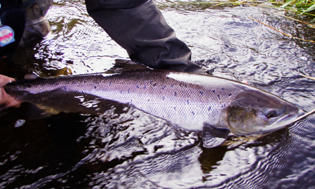 It is an enduring mystery how juvenile salmon, at 12cm long and weighing perhaps only 20g, can leave a Scottish river in springtime, undertake a sojourn of thousands of kilometres around the North Atlantic, and return between one and four years later to their rivers to spawn.
It is an enduring mystery how juvenile salmon, at 12cm long and weighing perhaps only 20g, can leave a Scottish river in springtime, undertake a sojourn of thousands of kilometres around the North Atlantic, and return between one and four years later to their rivers to spawn.
This is for good reason. A returning salmon, known as a grilse, will have grown 100-fold in size from the rich feeding to be found at sea. But the journey is not without risk. Between 80-90% of grilse, and fewer still multi-winter fish, will not survive their journey.
But the serious problems wild salmon now face at sea go beyond the hardships of their itinerant lifecycle. These have been intensively researched throughout Europe and North America, and it’s clear that in recent decades salmon mortality rates at sea have increased enormously. While possible causes include natural predation, disease and parasites, or being caught up in fishery by-catch, the truth is we just don’t know.
Read More:
Caledonian Mercury
